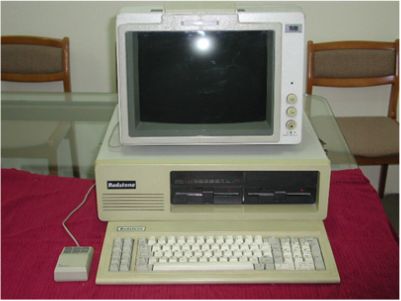The rise of the personal computer in business in the late 1980s changed the lives of office workers. Although they did many of the same things as they had before--writing memos and reports, calculating numbers, creating  presentations--they had to do these and other tasks on a computer, no exceptions. From the outside, the old desktop computer was a daunting piece of heavy metal, with cords snaking everywhere, but the stuff inside (software programs and operating systems) was even more intimidating.
presentations--they had to do these and other tasks on a computer, no exceptions. From the outside, the old desktop computer was a daunting piece of heavy metal, with cords snaking everywhere, but the stuff inside (software programs and operating systems) was even more intimidating.
Some early computer book publishers did a decent job of helping millions of non-technical people learn how to use their computers. Often, however, the computer books were nearly as fat, jargon-filled and heavy-handed as the user manuals they were designed to replace. One publisher took a different approach.
IDG Books Worldwide was founded in April 1990 as a subsidiary of International Data Group, or IDG (an information technology media company that still publishes hundreds of online and print technology magazines). Its early books included titles co-branded with a related IDG publication, such as the Macworld Guide to System 7 or PC World Paradox 3.5 Power Programming Techniques.
But the staff at IDG Books considered themselves more of a technology start-up than a book publisher, and like other start-ups, they thought outside the box. They wondered:
What if a computer book was--gasp--fun to read?
What if the book didn't "teach" in a traditional, tutorial way but showed how to do things?
What if the author acted as a trusted friend who was sitting down with you over a cup of coffee, telling you how to work a computer?
What if a lighthearted approach eased readers' fears about difficult subject matter and made these concepts interesting and manageable?
What if a computer book actually helped the user manage daily work?

